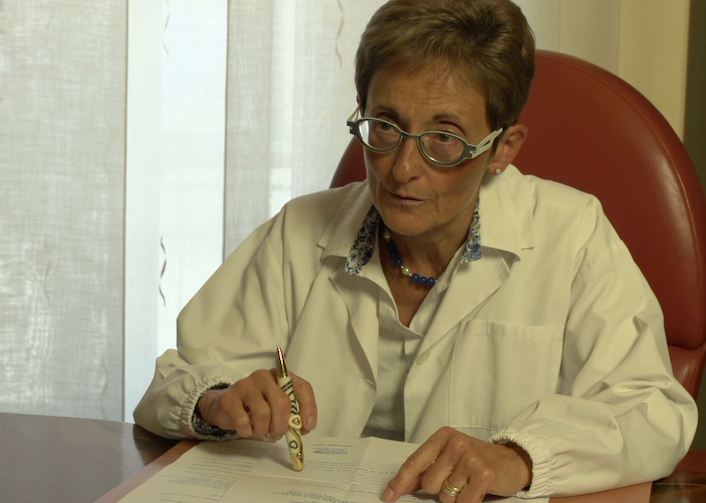Cistiti
Cistiti
La Cistite è il sinonimo di una vescica infiammata. Normalmente, questo è causato da un’infezione delle urine, ma può anche essere causato da irritazioni, ad esempio fare sesso. È molto comune nelle donne. La cistite negli uomini e nei bambini può essere un segno di altre condizioni.
La cistite è caratterizzata dalla necessità di urinare frequentemente e da un dolore pungente o bruciante quando si urina. Potresti avere dolori al basso ventre, vedere tracce di sangue nelle urine anche accompagnato anche febbre. Potresti anche notare che l’urina è più torbida del normale e ha un cattivo odore. Se bevi molta acqua, la cistite a volte andrà da sola in pochi giorni, ma potresti aver bisogno di un breve ciclo di antibiotici per liberartene completamente. Una cistite non opportunamente considerata può portare l’infezione a diffondersi ai reni.
Le donne hanno una probabilità otto volte maggiore rispetto agli uomini di sviluppare la cistite (l’uretra di una donna è più corta e più vicina all’ano rispetto a quella di un uomo). Il 15% delle donne soffre di cistite ogni anno e il 50% di tutte le donne soffre di cistite almeno una volta nella vita.
Se la tua cistite non migliora entro uno o due giorni o se si manifestano altri sintomi dovresti consultare un medico:
• Febbre e brividi
• Sangue nelle urine
• Vomito
• Dolore nella parte bassa della schiena.
Le persone che hanno una storia di infezioni renali, problemi cardiaci o infezioni vescicali ricorrenti dovrebbero consultare il proprio medico quando soffrono di cistite così come i pazienti che soffrono di diabete e le donne in gravidanza, visto l’aumentato rischio che l’infezione si diffonda ai reni.
What can I do to avoid bladder infection?
Most urine infections are caused by germs from the bowel being transferred from your anus (back passage) to your urethra (the tube that your bladder sends urine through when you urinate). Certain types of bacteria thrive in urine and rapidly multiply, spreading the infection.
Most of the time, this happens when people don’t go to the toilet often enough. This results in “left-overs” of urine and bacteria in the bladder that lead to an infection. So, remember to empty your bladder regularly and as completely as possible. This problem may also occur in people who don’t drink enough. This can cause the urine to become more concentrated in the bladder, until it can be flushed out. This can also result in bacterial infections. It’s possible that a blockage somewhere in your kidneys, bladder or urethra cause cystitis as well, for example because of kidney stones or prostate problems in men.
First Steps – Diagnosis of E.coli In Urine
Sometimes your GP might want to diagnose cystitis by detecting the presence of bacteria in your urine as well as asking you about your symptoms. In this case, your doctor will ask you for a sample of your urine, then examine it with a dip-stick or start a urine culture to identify which bacteria is the cause of your infection. This way they can prescribe the most suitable treatment to you. Since E.coli bacteria is the cause of most cases, your doctor may prescribe you trimethoprim or MacroBid to begin with. If other bacteria have caused the infection, or the E.coli are resistant to these antibiotics, your doctor will contact you to prescribe a more suitable treatment.
Which are the risk factors in Women?
It’s estimated that 30-50% of women will have cystitis at some time in their life. Here’s a list of all the risk factors that contribute:
• Pregnancy – hormonal and physical changes can contribute to the infection;
• Menopause – hormonal changes can contribute;
• Using the contraceptive diaphragm;
• Sexual activity (increase the chances of having bacteria pushed in the urethra) and having unprotected sex with new partners (infection due to the body’s unfamiliarity to new bacteria carried by the new partner);
• Diabetes – excess sugar facilitates the reproduction of bacteria;
• Impaired immune system – i.e. when natural defenses are down (e.g. because of an illness or a cancer treatment).
Other risk factors of bladder irritation include:
• Foreign bodies in or near the bladder (tubes, kidney stones,…);
• Strong allergies to vaginal creams and other hygiene products;
• Vaginal infections, such as thrush;
• Sexually transmitted infections (STIs), such as chlamydia, can increase the risks of getting cystitis.
There is also some evidence that using a spermicide destroys the normal vaginal flora, including its bacteria, which can lead to an increase in the number of foreign bacteria which will then become the source of bladder infection.
Cystitis risk factors in men
Male bladder infection is usually a symptom of a more severe disease. It therefore requires a visit to the doctor. It is sometimes the sign of an obstruction somewhere within the urinary tract. STIs can also cause bladder infection in men.
Are there possible complications?
Most cases of cystitis pass within a few days. However, if they last for more than a few days, you should seriously consider a medical treatment for the bladder infection.There is a risk that cystitis could turn into a kidney infection, which is much more dangerous if left untreated.
After treatment, what should I expect?
Most women find that their cystitis improves within a few days of treatment. If your symptoms have not cleared or come back within two weeks, see your doctor. Some of the bacteria that can cause cystitis are resistant to different types of antibiotics. You may need to try a different course of treatment.
Cystitis in men
Cystitis occurs much less frequently in men. Sexually active gay men are more likely to get it than other men. Cystitis can be serious, because it can be a sign of:
• An infection of the bladder or prostate (the gland between the penis and the bladder)
• A blockage/obstruction in the urinary tract (e.g. from a tumour or an enlarged prostate)
• Men who get cystitis should therefore see a doctor as soon as possible.
Which types of cystitis are there?
This page covers bacterial cystitis. However, there are other types of cystitis:
Interstitial cystitis – causes recurring discomfort in the bladder and pelvic area. It comes with a frequent and urgent need to urinate. The pain that it causes, along with other symptoms, vary from person to person. Women may find it even more painful when they are menstruating. Interstitial cystitis is normally diagnosed around age 40 and 90% of people who have it are women. It is treated with painkillers, bladder distension (increasing the bladders size by filling it), bladder instillation (filling the bladder with a solution to sooth irritation) or surgery.
Radiation cystitis – this is damage caused to the bladder by radiation therapy (such as when used to treat cancer in the pelvic organs). Symptoms include blood in the urine and pain.
Treatments include painkillers, Hyaluronic Acid, Elmiron and Botox injections.
Chemotherapy Induced cystitis – caused by immunotherapy given directly to the bladder.
Treatments include Hyaluronic Acid and Elmiron.
Cystitis Glandularis/Cystitis Cystica – In cystitis cystica, the lining of the bladder comes out in tiny blisters, in cystitis glandularis the lining is thicker over the blisters, giving a cobblestone appearance. Both are usually the result of a chronic urine infection. Treatment is usually long term antibiotics.

Dr. Giorgio Del Noce
Specialista in Urologia
Specialista in Sessuologia Clinica
Specialista in Chirurgia d’Urgenza
Specialista in Andrologia






